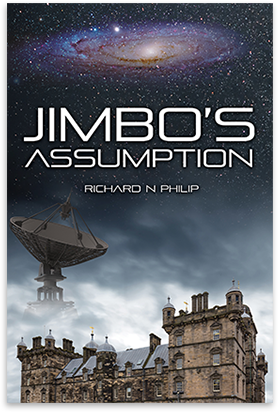
Colin Maclaurin
Strife is a recurring theme in Scottish history. Some fuelled by external forces, often from England, its larger southern neighbour. Other discordances, punctuated by power struggles, social change, or religious belief, plagued the nation. The 17th and 18th century Scots endured all such impositions.
While the 1603 Union of the Crowns and the 1707 Act of Union reshaped the political landscape by unifying Scotland and England, the intervening period was marked by upheaval. Much happened, including the ascent of Oliver Cromwell to declare a short-lived republic. Later, in 1688 CE, an invasion spearheaded by the Dutch fleet installed William & Mary as monarchs. The daughter of James II, Mary was a Protestant, bringing unhappiness to some in the Scottish Highlands.
Despite the incessant conflict, aspects of Scottish society blossomed. One such was education. The ideal of ‘a school in every parish’ gained traction. By then, Scotland possessed four universities to England’s two, with only one-fifth of the population. Edinburgh University, a testament to the citizens’ wisdom, prioritised learning and knowledge, effectively relegating doctrine and subservience.
Another was the Enlightenment, particularly the Scottish Enlightenment, marked by evidence-based reasoning. A zenith in the second half of the 18th century, but with effects felt far afield for decades around this peak. Franklin and Voltaire were among those influenced. Edinburgh was the movement’s epicentre. Diverse disciplines, from abstract philosophy to garden design, from empiricism to medical science, and from architecture to economics, were encompassed. Adam Smith, a Glasgow University alumnus and pioneer of economics, was a central figure. His statue graces Edinburgh’s Royal Mile.
An earlier recipient of university education in Glasgow was the precocious Colin Maclaurin. His father, a clergyman in rural Scotland’s west coast, died soon after Maclaurin’s birth in 1698 CE. An uncle, also an ecclesiastic, supervised his upbringing, but not for long, with the young man entering Glasgow University as an eleven-year-old. Graduating after three years, his studies comprised Latin, Greek, logic, moral philosophy, physics, and mathematics. His thesis addressed gravity, a new field, mastered at the age of 14. Already a devotee of Isaac Newton’s ideas. He remained in Glasgow, pursuing divinity for a further year. Thereafter, he retreated to his uncle’s manse, apparently enjoying the pastoral beauty, writing poetry, but studying hard.
Maclaurin’s investment in mathematical contemplation was rewarded in 1717 CE when, despite fierce competition, he was appointed Professor of Mathematics in Aberdeen, at another of Scotland’s esteemed ancient universities, aged 19. A record that remains unbroken: the youngest professorship at a British university. Though based in Aberdeen, teaching, and promoting Newtonian mathematics, he also travelled to London and continental Europe. In London, he earned Newton’s admiration and a Fellowship in the Royal Society. In France, he collaborated with leading mathematicians. An early recipient of the Paris Academy’s Grand Prize for his work on the Collision of Bodies.
In 1725 CE, with Newton’s support, he was given the chair of mathematics at the more prestigious Edinburgh University. The city would remain Maclaurin’s home for the rest of his life. In addition to marriage and five surviving children, he produced a wealth of mathematical insights. He attained a reputation as a talented teacher, sensitive to the limitations of his students. Not all were prodigies, geniuses from childhood.
Geometry intrigued him, with published work dating from his Aberdeen days. He applied Newton’s gravitational model to the deformation of a submerged sphere by tidal forces, again winning a prize from the Paris Academy. What distinguished this episode, apart from his ingenuity, was the joint award to Maclaurin and the two leading continental mathematicians of the era, Daniel Bernoulli and Leonhard Euler. Impressive colleagues, solidifying his standing.
A signature work was his Treatise of Fluxions, a >700-page undertaking that provided a first systematic account of Newton’s methods (fluxions was the Newtonian term for calculus). More than this, he roved the mathematical landscape, writing on assorted phenomena from actuarial models to bees’ honeycombs. A-to-b and beyond.
An active citizen, he lobbied the Medical Society of Edinburgh to broaden its interests. In 1783 CE, after Maclaurin’s death, this led to the Royal Society of Edinburgh. Still a vibrant forum.
In 1745 CE, the more restive Highlanders joined a rebellion, the Jacobite Uprising, intent on regaining the British throne for the Catholic House of Stuart. They marched south, expecting widespread support. Maclaurin dedicated himself to fortifying Edinburgh against the impending attack. When the city’s defences proved inadequate, the gates were opened to the Jacobites. Maclaurin fled south, finding refuge as a guest of the Archbishop of York. The Jacobean venture ultimately failed; their army vanquished in the following year.
Maclaurin paid a heavy toll. Exhausted by his recent endeavours in Edinburgh, arduous winter journeys to and from York, and a debilitating fall from his horse, this weakened mathematician died in 1746 CE. Only 48, a man in his prime, liked and respected, with much still to contribute, was lost too soon.
Now, best known for a mathematical expansion, the Maclaurin Series.
A brief foray into geodesy, as depicted in Jimbo's Assumption, brings Colin Maclaurin momentarily into the spotlight before he fades back into the shadows of Greyfriars's Churchyard. This fleeting glimpse is just a prelude to further exposure. - RNP
Post Views : 89